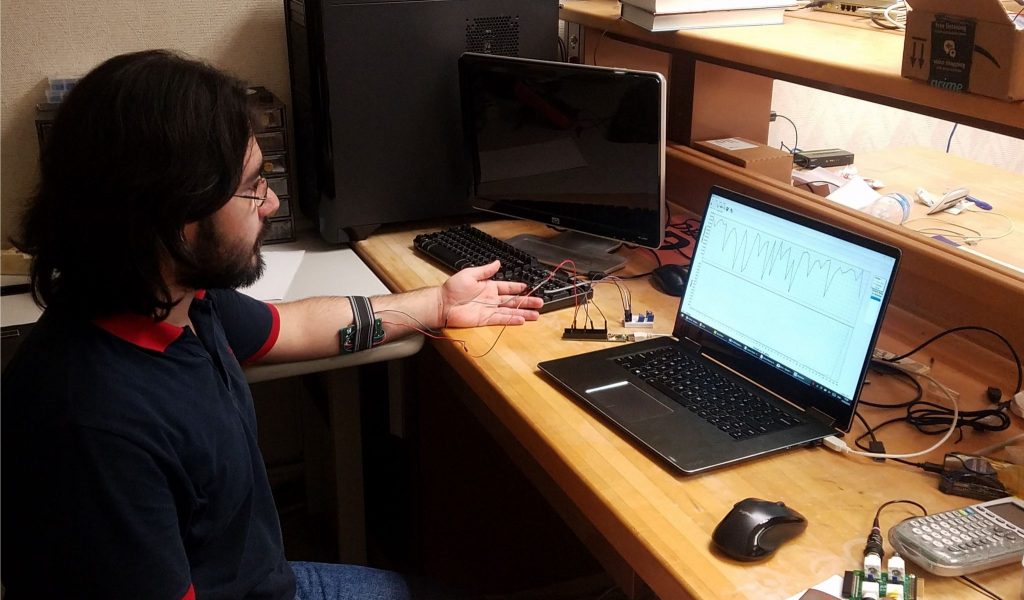
Engineering doctoral student Yunus Kelestemur tests a component for a new wearable device that his group is currently developing. This technology may one day make it easier for patients with diabetes to continuously monitor levels of glucose in the blood.
By Amanda Biederman
NQPI editorial intern
For patients with diabetes, needles and syringes are a staple of everyday life. Yet in the near future, glucose monitoring may be as simple as reading a text message.
Electrical Engineering and Computer Science professor and Nanoscale and Quantum Phenomena Institute member Dr. Savas Kaya, post-doctoral researcher Dr. Soumyasanta Laha, and doctoral student Yunus Kelestemur are currently working to develop a “smart watch” that is capable of monitoring glucose levels in real time.
Many companies, such as Apple and FitBit, are also working to develop wearable glucose monitors. Yet these devices often lack accuracy, Kaya said. His team has adopted an approach to improve device comfort and practicality.
“This is a unique market,” Kaya said. “Nobody’s going to wear a five-pound dangling unit. It has to be compact, wearable (and) low-cost. We are working on an impossible job with a small group and a small budget, but what counts is the idea.”
Their prototypes utilize infrared light that measures glucose levels through the skin via a weak coupling mechanism to glucose molecules. The team’s designs are capable of greater accuracy than others’ due to high signal-to-noise detection circuitry, multiple measurement points, and integration of different types of measurements. Their approach will account for the effect of external factors on the readings, Kaya said.
The team’s project is supported by a seed grant through OHIO’s Innovation Strategy. Kaya is collaborating with Electrical Engineering and Computer Science professors Dr. Cindy Marling and Dr. Razvan Bunescu, who are utilizing their expertise in computational analytics to integrate multiple sensors within the system, and Biomedical Sciences professor Dr. Vishwajeet Puri, who has an interest in utilizing the design to monitor lab animals.
“We believe that this approach is promising because we think in multiple angles,” Kaya said. “For 20 years the industry has been focused (on one type of approach). If something hasn’t been solved in 10 or 20 years, there’s a big problem. You need to think out of the box.”



















Comments